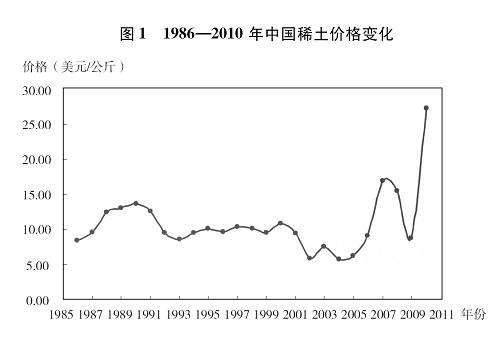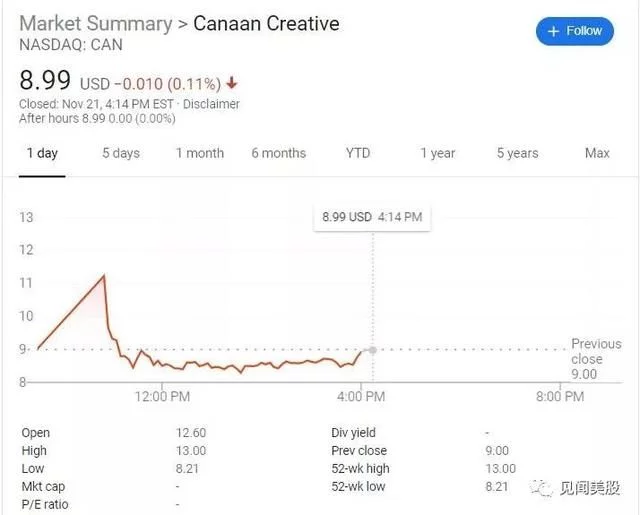主页 > imtoken钱包安卓安装教程 > 中国稀土现状及政策
中国稀土现状及政策
新华社北京6月20日电
中国稀土现状及政策
(2012 年 6 月)
中华人民共和国国务院新闻办公室
内容
前言
一、稀土现状
二、发展原则与目标
三、有效保护和合理利用资源
四、促进稀土利用与环境协调发展
五、促进技术进步和产业升级
六、促进公平贸易和国际合作
前言
稀土是重要的不可再生自然资源,其在经济和社会发展中的应用日益广泛。
中国是稀土资源丰富的国家之一。 1950年代以来,中国稀土产业取得了长足的进步。经过多年努力,中国已成为全球最大的稀土生产国、应用国和出口国。
稀土的发展造福于人类,但随之而来的资源和环境问题也越来越突出。在稀土开发利用中,合理利用资源、有效保护环境是世界面临的共同挑战。近年来,我国在稀土开采、生产、出口等方面采取综合措施,加大资源和环境保护力度,努力促进稀土产业持续健康发展。
随着经济全球化的深入发展,中国在稀土领域的国际交流与合作日益增多。中国始终遵守规则,信守承诺,为世界提供了大量稀土产品。中国将继续按照世界贸易组织规则,加强对稀土产业的科学管理,向国际市场供应稀土产品,为世界经济的发展和繁荣作出贡献。
一段时间以来,一些国家密切关注中国稀土形势和政策,众说纷纭。这里简单介绍一下,以增进国际社会的了解。
一、稀土现状
稀土是镧系元素镧 (La)、铈 (Ce)、镨 (Pr)、钕 (Nd)、钷 (Pm)、钐 (Sm)、铕 (Eu)、钆 (Gd)、铽(Tb)、镝 (Dy)、钬 (Ho)、铒 (Er)、铥 (Tm)、镱 (Yb)、镥 (Lu),加上钪 (Sc) 和钇 (Y) 的同族元素,是共17个元素的总称。根据元素的原子量和物理化学性质,分为轻、中、重稀土元素。前五种元素为轻稀土元素,其余为中重稀土元素。稀土因其独特的物理化学性质,被广泛应用于新能源、新材料、节能环保、航空航天、电子信息等领域,是现代工业中不可缺少的重要元素。
中国拥有较为丰富的稀土资源,中国稀土储量约占世界总储量的23%。中国稀土资源主要具有以下特点:
——资源赋存分布的分布是“北轻南重”。轻稀土主要分布在内蒙古包头、四川凉山等北方地区,离子型中重稀土主要分布在江西赣州、福建龙岩等南方地区。
——资源种类很多。稀土矿产种类丰富,有氟碳铈矿、独居石、离子矿、磷钇矿、钇铌等,稀土元素比较齐全。离子型中重稀土矿物在世界上占有重要地位。
——与轻稀土矿物伴生的放射性元素对环境影响很大。大部分轻稀土矿都可以大规模开采,但钍等放射性元素的加工难度较大。在采冶分离过程中,应注意对人体健康和生态环境的影响。
——离子型中重稀土矿赋存条件较差。离子型稀土矿中的稀土元素以离子状态吸附在土壤中,分布分散,丰度低,难以大规模工业开采。
自1970年代末改革开放以来,中国稀土产业发展迅速。稀土开采、冶炼及应用技术研发取得长足进展,产业规模不断扩大,基本满足国民经济和社会发展的需要。
——形成完整的产业体系。我国在以江西赣州为代表的南方五省形成了内蒙古包头、四川凉山轻稀土和中重稀土三大生产基地。生产400多个品种、1000多个规格的稀土产品。 2011年中国稀土冶炼产品产量为9.69万吨,占世界总产量的90%以上。
——市场环境逐步改善。中国继续推进稀土产业改革,推动形成投资主体多元化、企业自主决策、供需决定价格的稀土市场体系。近年来,我国稀土产业投资快速增长,市场规模不断扩大。国有、民营、外资等多种经济成分并存。目前稀土市场规模接近1000亿元。市场秩序逐步完善,企业间兼并重组逐步推进,稀土行业“小散乱”的局面初步得到改善。
——科技水平进一步提高。经过多年的发展,我国已经建立了较为完善的研发体系,在稀土开采、冶炼、分离等领域形成了多项具有国际先进水平的技术。利用坚实的基础。稀土新材料产业稳步发展,实现稀土永磁材料、发光材料、储氢材料、催化材料等新材料产业化,为传统产业转型升级和战略性新兴产业发展提供支撑行业。
中国稀土产业的快速发展,不仅满足了国内经济社会发展的需要,也为全球稀土供应做出了重要贡献。长期以来,中国认真履行加入世界贸易组织的承诺,遵守世界贸易组织规则,促进稀土公平贸易。目前,中国以23%的稀土资源占据了世界90%以上的市场供应。中国生产的稀土永磁材料、发光材料、储氢材料和抛光材料均占世界总产量的70%以上。中国的稀土材料、器件、节能灯、微电机、镍氢电池等终端产品满足了世界各国特别是发达国家高新技术产业的需求。
在高速发展的同时,中国稀土产业也存在诸多问题,中国也为此付出了巨大的代价。主要表现在:
——资源被过度开发。经过半个多世纪的超集约开采,我国稀土资源储量和保障寿命不断下降,主要矿区资源加速开采,原有矿山资源大部分枯竭。包头稀土矿主矿区资源仅剩三分之一。南方离子型稀土多位于偏远山区,山高林密,矿区分散,矿点众多,监管成本高、难度大,非法开采严重破坏资源。富人弃贫、易弃难采现象严重,资源回收率低。南方离子型稀土资源回收率不足50%,包头稀土矿利用率仅为10%。
——生态环境遭到严重破坏。稀土开采、选矿、分离等生产工艺和技术落后,严重破坏了地表植被大理石矿开采利润怎么样,造成水土流失、土壤污染、酸化,导致农作物减产甚至无收。离子型中重稀土矿过去采用后向堆浸和池浸工艺,每生产1吨稀土氧化物产生约2000吨尾矿。大量氨氮、重金属等污染物破坏植被,严重污染地表水、地下水和农田。轻稀土多为多金属伴生矿物,在冶炼分离过程中会产生大量有毒有害气体、高浓度氨氮废水、放射性残渣等污染物。一些地方由于稀土过度开采,引发山体滑坡、河道堵塞、突发环境污染事件,甚至发生重大事故灾害,给公众健康和生态环境造成重大损失。生态环境的恢复和治理也成为一些稀土产区的沉重负担。
——产业结构不合理。冶炼分离能力严重过剩。稀土材料与器件研发滞后,稀土新材料及终端应用技术开发与国际先进水平存在明显差距。稀土新材料和器件的知识产权和生产加工技术较少,低端产品过剩,高端产品缺乏。稀土行业作为一个小产业,产业集中度低,企业众多,缺乏具有核心竞争力的大型企业,行业自律性差,存在一定的恶性竞争。
- 价格与价值显着偏离。一段时间以来,稀土价格并未真正体现其价值,长期低迷。资源稀缺性未得到合理体现,生态环境损失未得到合理补偿。 2010年下半年以来,虽然稀土产品价格逐渐回升,但涨幅远低于黄金、铜、铁矿石等原材料。 2000年至2010年,稀土价格上涨2.5倍,而黄金、铜、铁矿石价格分别上涨4.4、4.1、4.8 次。

图1 新华社发布的1986-2010年中国稀土价格变化

图2 2000-2010年稀土及其他产品价格涨幅对比图 新华社发布的矿石价格变化对比图
——出口走私较为严重。受国内外需求等多方面因素影响,虽然中国海关已将稀土列为重点走私项目,但稀土产品出口走私依然存在。 2006年至2008年,据国外海关统计,中国稀土进口量分别比中国海关统计出口量高出35%、59%和36%,是2011年1.的2倍更高。
针对稀土产业发展中存在的突出问题,中国政府进一步加强了对稀土产业的监管。 2011年5月,国务院正式颁布《关于促进稀土产业持续健康发展的若干意见》(以下简称《意见》),将保护资源环境,实现把可持续发展摆在更加重要的位置,依法加强对稀土的保护。采矿、生产、流通、进出口等管理部门,研究制定、修改和完善相关法律法规,加强对稀土行业的管理。中国政府建立了稀有金属部际协调机制,统筹研究国家稀土发展战略、规划、规划、政策等重大问题;设立稀土办公室,协调提出稀土开采、生产、储存、进出口等方面的规划。国务院有关部门按职责分工,做好相应的管理工作。 2012年4月,中国稀土行业协会获批成立,在行业自律、规范行业秩序、积极开展国际合作交流等方面发挥重要作用。 《意见》实施一年多来,行业发展方式转变步伐加快,行业发展秩序明显改善。
二、发展原则与目标
(一)基本原则
——坚持保护环境,节约资源。落实更严格的生态环境保护标准和保护性开采政策,尽快完善稀土管理法律法规,严厉打击各类违法违规行为。
——坚持总量控制和库存优化。企业集团化战略,推进稀土产业结构调整,积极推进技术创新,严控采冶分离产能,淘汰落后产能,进一步提高稀土产业集中度。
——坚持兼顾国内和国际两种资源。对采矿、生产、出口采取同步管理措施,鼓励国际交流与合作。
——坚持与地方经济社会发展相协调。正确处理局部与全局、当前与长远,维护稀土产业正常发展秩序。
(二)主要目标
短期内,建立规范有序的资源开发、冶炼分离和市场流通秩序、资源无序开发、生态环境恶化、盲目扩大生产、出口走私猖獗等问题得到有效解决遏制;稀土资源回收率、选矿回收率和综合利用率得到提高,资源开发强度得到有效控制,储产比得到有效控制。恢复到合理水平;废水、废气、废渣排放完全达标,重点区域生态环境得到有效恢复。稀土产业兼并重组加快,形成规模化、高效、清洁的规模化生产企业;新产品开发和新技术推广应用步伐加快。在此基础上,进一步完善稀土政策法规,逐步建立规范、高效的稀土产业管理体系,形成发展合理、生产有序、高效利用、技术先进、集约发展的稀土产业。行业持续健康的发展格局。
三、资源的有效保护和合理利用
稀土作为一种不可再生的自然资源,必须得到有效保护和合理利用。多年来,中国努力实施稀土保护性开采,促进资源的可持续利用。
1980年代,我国颁布了《矿产资源法》,对国家矿区规划和国民经济具有重要价值。 1991年,我国决定将离子型稀土矿列为国家保护矿产,从矿、选矿、加工上市销售 2006年,我国实施稀土开采总量控制管理。 2007年,稀土生产纳入强制性生产计划管理。 2008年,国家印发了《全国矿产资源规划》(2008-2015年),对稀土等特定矿产实行规划和监管,限制开采、严格准入和综合利用,进行保护性开采。 2009年,国家实施保护性开采,征收勘查开采登记审批权限。 2011年,国家统一调整稀土矿原矿资源税标准。调整后的计税标准为:轻稀土(含氟碳铈矿和独居石)60元/吨;中重稀土(含磷钇矿、离子型稀土矿)30元/吨,较调整前的0.4元/吨-2元/吨的税率有很大提高。国家还建立稀土战略储备体系,实施稀土资源储备和产品储备,划定首批11个稀土国家规划矿区,编制完成稀土资源重点规划区(矿区)专项规划。严格采矿权管理,实行采矿权设置制度,原则上继续暂停受理新的稀土勘查和采矿登记申请,禁止现有矿山扩大产能。严格控制采采总量,降低资源开发强度,延缓资源枯竭,促进可持续发展。
近年来,我国开展稀土开采生产专项整治行动,从各方面有效保护和合理利用稀土资源。通过采用卫星航拍、视频监控、定期巡查、月报制度、专项发票监控、举报电话等手段,严格控制稀土开采总量和强制生产计划指标。坚决依法严厉打击非法开采稀土和超出控制目标的开采活动,坚决打击稀土冶炼分离企业的计划外、超计划生产。加强对重点稀土产区的联合监管,查处非法开采、生产污染环境、浪费资源、不具备安全生产条件的稀土企业,对企业和相关人员依法追究责任。法律。重新审核已颁发的勘查许可证和采矿许可证,并向社会公布合法采矿企业名单。加快建立规范稀土开采、生产秩序和监管的长效机制。深入推进稀土企业兼并重组,淘汰落后工艺和产能,实现规模化、集约化生产。通过专项整治,查处违法开采稀土案件600余起,立案100余件。 13家矿山、76家冶炼分离企业停产整顿,有效遏制了非法开采和生产稀土的势头。
中国政府高度重视稀土资源的综合利用。近年来,国家加强离子型稀土矿地质结构研究,积极推进绿色矿山和综合利用示范基地建设,开发绿色高效采矿技术,大大提高稀土回收率,支持开发新型浮选药剂和选矿设备,提高稀土开采效率。进行了选矿回收率和贫矿、尾矿稀土回收。国家促进稀土元素均衡利用,鼓励镧、铈等相对丰富的轻稀土元素应用研究,加快开发铕、铽、镝等稀缺重稀土元素的减量替代技术推进复杂难选稀土金属共生矿在选冶过程中的综合回收利用,支持稀土中铌、钽、钍、锶、钾、萤石等伴生矿物的回收利用矿石。
中国大力支持循环经济发展,积极开展稀土二次资源回收利用。鼓励发展稀土废料收集、处理、分离、提纯等特种工艺、技术和装备,支持建立稀土专业化材料综合回收基地、电机、废镍氢等稀土二次资源电池、废稀土荧光灯、失效的稀土催化剂、废稀土抛光粉等含稀土的废组分回收再利用。
四、促进稀土利用与环境协调发展
近年来,由于保护环境的需要,我国不断加强和改进对产品及相关行业的管理。在稀土领域大理石矿开采利润怎么样,国家采取一系列有效措施促进稀土开发利用与生态环境协调发展,绝不会为了稀土产业的发展而牺牲环境。
加强稀土产业环境管理和相应法律法规建设,是促进稀土利用与生态环境协调发展的重要保障。 1980年代以来,中国先后制定了《环境保护法》、《水污染防治法》等十余部环境保护法律,建立了环境影响评价、污染物总量控制、限期治理等制度。国家颁布实施《土地复垦条例》,全面履行土地复垦义务,要求实现矿山开采、保护和复垦,恢复矿山生态环境。从“十一五”(2006-2010年)开始,国家将节能减排纳入国民经济和社会发展规划目标,将降低能源消耗强度、化学需氧量和二氧化硫排放作为约束性指标。在“二五”规划(2011-2015年)中,将降低二氧化碳排放强度、减少氨氮和氮氧化物排放纳入约束性目标。为进一步加强稀土产业生态保护,2011年国家颁布实施《稀土产业污染物排放标准》,明确了氨氮、化学需氧量、磷、氟、钍、重金属和二氧化硫、氯、颗粒物等稀土生产企业。污染物排放限值。目前,我国正在研究建立稀土产业环境风险评估体系。
严格执行环境保护法律法规是稀土开发利用保护环境的关键。近年来,国家严格执行环境影响评价制度。稀土项目的新建、扩建和改建必须对可能产生的环境影响进行分析、预测和评价,提出预防和减轻环境影响的对策和措施。实行“三同时”制度,稀土建设项目的环保设施必须与主体工程同时设计、同时施工,经环保部门验收后同时投入使用。实施排污许可制度和《稀土工业污染物排放标准》,稀土企业应当事先取得环保部门的许可,并按照排放标准规定的浓度、数量和方式达到排放标准,禁止未经依法许可擅自排放。实施强制淘汰制度,禁止使用离子型稀土矿堆浸、池浸和选矿工艺,禁止开发单一独居石矿,禁止使用严重污染环境、破坏生态的工艺,防止生态从源头上破坏和环境污染。近年来,国家更加严格执行稀土矿山地质环境修复管理保证金制度,督促稀土矿山企业严格落实生态环境保护修复经济责任,逐步树立责任主体。矿山环境治理与生态修复机制。
我们将在稀土行业开展专项环境整治。在专项整治中,各级政府明确要求,现有稀土企业必须加快环保设施建设,达标排放,实施清洁生产,否则将依法停产,不达标的企业限期整改达标的,必须坚决取缔。 2011年以来,国家对所有稀土矿山、冶炼分离、金属生产企业开展环保检查,严肃查处稀土企业污染环境的行为。行业和企业环保改造和技术升级投入超过40亿元,稀土行业环保水平显着提高。对环境污染严重、环境安全隐患突出、公众反馈强烈、不符合环境保护法律法规要求的企业,依法采取上市监督、限期治理等措施。各级政府将投入资金对历史形成的生态环境破坏、尾矿、废渣污染等问题进行专项治理。
五、促进技术进步和产业升级
中国高度重视提高稀土科学开发和应用技术水平,着力营造政策环境,加快推进稀土技术进步和产业升级,努力打破资源环境制约瓶颈,为稀土可持续发展提供技术支撑。
国家鼓励稀土行业的技术创新。在《国家中长期科技发展规划纲要(2006-2020年)》中,稀土技术被列为重点支持方向。国家支持稀土基础研究、前沿技术研究和关键产业技术的研发、推广和应用,推动建立以企业为主体、以市场为导向、以市场为导向的技术创新体系。产学研相结合。积极发展环境友好、先进适用的稀土开采技术、复杂地质条件高效开采技术和伴生资源综合回收技术,提高资源回收循环利用水平。 Vigorously organize the research and development of advanced technologies such as low-carbon and low-salt emissions, ultra-high-purity product preparation, membrane separation, associated thorium resource recovery and utilization, tail gas fluorine-sulfur recovery and treatment, chemical raw material recycling, and automatic production control to achieve efficient and clean smelting and separation of rare earths. Guide rare earth production and application enterprises, scientific research institutes and colleges and universities to vigorously develop rare earth deep processing and new material application technologies. Vigorously cultivate rare earth scientific and technological talents, strengthen intellectual property protection and technical standard construction, and create favorable conditions for the development of rare earth technology.
In recent years, the state has accelerated the technological transformation of enterprises. Promote the use of in-situ leaching and other efficient green mining and beneficiation technologies and advanced equipment to transform existing rare earth mines, improve comprehensive utilization of resources, ecological restoration, environmental protection and safety production levels, build and improve special tailings storage and treatment facilities, and strengthen tailings. protection and utilization. Encourage the use of advanced technologies and equipment such as ammonia-free smelting and separation and linkage extraction and separation to transform existing rare earth smelting and separation production lines to reduce chemical material consumption and "three wastes" emissions. Adopt new low-emission, low-energy-consumption technologies and equipment to transform rare earth metal smelting enterprises, improve production efficiency and product quality, and reduce energy and material consumption. Speed up the elimination of backward processes and production capacities such as ammonia saponification separation, chloride electrolysis, and wet preparation of rare earth fluoride. Support enterprises to combine technological transformation with mergers and reorganizations, and eliminate outdated production capacity, and accelerate the closure and transfer of outdated enterprises.
Adjusting and optimizing the industrial structure is an important part of promoting the sustainable and healthy development of the rare earth industry. The Chinese government strictly controls the total amount of rare earth smelting and separation. Except for the merger, reorganization, and layout optimization projects approved by the state, it stops approving new rare earth smelting and separation projects, and prohibits existing rare earth smelting and separation projects from expanding their production scale. Resolutely stop the construction of illegal projects, and investigate the relevant units and persons in charge according to law for those who exceed their powers in approval and construction in violation of regulations. Adjust the structure of rare earth processed products, control the excessive consumption of rare earths in low-end fields, reduce the output of processed products with low grades and high consumption of rare earths, comply with international rare earth technology and industrial development trends, and encourage the development of rare earth applications with high technology content and high added value industry. Accelerate the development of new rare earth materials and devices such as high-performance rare earth magnetic materials, luminescent materials, hydrogen storage materials, and catalytic materials, and promote the application of rare earth materials in the fields of information, new energy, energy conservation, environmental protection, and medical care. Encourage enterprises to strengthen management innovation, establish a modern enterprise system, accelerate industrial upgrading, and cultivate and form modern enterprises that are resource-saving, environmentally friendly, intensively developed, and actively fulfill their social responsibilities.
六、Promoting fair trade and international cooperation
Opening to the outside world is China's basic national policy. In the field of rare earths, China takes into account both domestic and international resources and markets, and pursues a win-win strategy that not only maintains a reasonable supply of rare earths in the international market, but also protects the ecological environment and resources, and continuously promotes fair trade and international exchanges and cooperation.
Based on the needs of resource environmental protection and sustainable development, and taking into account domestic and foreign markets, resource and environmental carrying capacity and domestic production, China strictly controls the total amount of rare earth mining and production, and simultaneously implements relevant mining, The restriction measures on production, consumption and export, and the reasonable determination of the total annual export quota of rare earths, basically meet the normal demand of the international market. At the same time, strict customs supervision, standardize the management of enterprise declarations, and require rare earth export enterprises to comply with industrial policies, industry access, environmental protection standards and other requirements. Strengthen the supervision and management of export enterprises, strengthen industry self-discipline, and investigate corresponding legal responsibilities in accordance with the law for enterprises that export rare earth products in disguised form, purchase export products from illegal channels, and other behaviors that disrupt the order of export operations. In 2011, a special campaign against rare earth smuggling was launched, and 8 rare earth smuggling crimes involving 769 tons of rare earth were seized and 23 suspects were arrested. At the same time, the state strictly prohibits the import of rare earth minerals with radioactive substances exceeding the standard.
On the issue of rare earth trade, the Chinese government has repeatedly stated that China will continue to supply rare earths to the international market. The Chinese government's strengthened management of rare earth exports is implemented simultaneously with the strengthened management of rare earth mining, production and other links. This is not only in line with China's sustainable development, but also in the interests of all countries in the world. China opposes the politicization of the rare earth issue, and is willing to strengthen dialogue and cooperation with other rare earth producing and consuming countries in a constructive and responsible manner, jointly prevent excessive speculation in the rare earth market, and jointly resolve resource and environmental problems in industrial development. China also hopes that countries rich in rare earth resources will actively develop their own resources, expand supply channels in the international market, realize the diversification of rare earth supply, expand the scale of trade, and jointly assume the responsibility of global rare earth supply to meet the needs of the sustainable development of the world economy.

Figure 4 Distribution of China's rare earth exports in 2011 Xinhua News Agency
In recent years, China has actively created a fair and open investment environment , encourage foreign investment in rare earth environmental governance, recycling and reuse of waste products and high-end applications and equipment manufacturing industries. At present, companies from the United States, Germany, France, Canada, Japan and other countries have invested in the rare earth industry in China. There are 38 wholly-owned and joint ventures with an investment of 6.1 billion yuan. These products are mainly used for export to meet the needs of their domestic market. . China encourages domestic enterprises to actively participate in international technological and economic cooperation in the field of rare earths in accordance with international practices and market rules.
China actively participates in international exchanges in the field of rare earths. It has successively established academic exchange platforms such as the International Rare Earth Development and Application Seminar, the International Rare Earth Summit Forum, and the Baotou International Rare Earth Forum. Actively participate in the relevant activities carried out by the International Rare Earth Permanent Magnet and Application Organization, the International Display and Lighting Organization, etc., and carry out extensive bilateral and multilateral exchanges and dialogues with the United States, the European Union, Russia, Japan, etc., to communicate information, enhance understanding, and jointly promote the world's rare earth Sustained development of technology and industry.
The sustainable and healthy development of the rare earth industry is related to the sustainable utilization of rare earth, an important natural resource, and also to the harmony and beauty of the earth on which human beings live. In today's world, countries are interdependent, co-existing and prosperous. On the rare earth issue, we should strengthen cooperation, share responsibilities and share results. In the years to come, China will adhere to the scientific outlook on development, improve rare earth policies, strengthen industry management, and work with the international community to maintain a fair and reasonable market order for rare earths, promote the coordination of rare earth development and utilization with resources and the environment, and contribute to the development of the world economy and science and technology. make new contributions.





